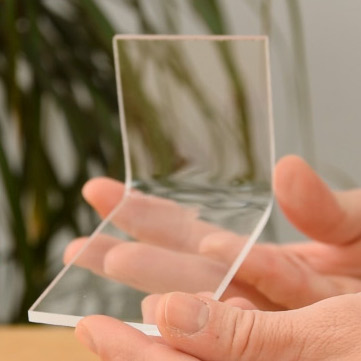Blogs
Looking for the old Kontakan site? It has been moved to Berkada.com.
A standard feature of 3D printer enclosure designs for many years, clear acrylic panels have proven to be a costly addition that can add significant time and money to the overall design process due to factors such as increased shipping costs and weight, as well as additional hassle, to name a few considerations. Corrugated plastic, in addition to wood, is a material to consider as an alternative. While corrugated plastic does not have as many advantages as wood, there are some that make it a worthwhile consideration, particularly for those who enjoy building things as a recreational activity. Corrugated plastic is a material that is made of corrugated plastic.
In addition to the numerous benefits that corrugated plastic offers, the following characteristics of corrugated plastic stand out as particularly advantageous: corrugated plastic is lightweight, flexible, and durable.
It costs only a fraction of the price of acrylic sheeting, according to the manufacturer, when compared to the latter material.
Second, because corrugated plastic material is 4 mm thick, as opposed to how to cut acrylic sheet material's thickness of only 3 mm, it is not always a direct drop-in replacement for acrylic material in existing designs, primarily due to the thickness difference between the two materials. Regarding the thickness of the panels that comprise the enclosure, it is completely unconstrained.

Corrugated plastic enclosures are a versatile material that can be used in a variety of applications outside of the medical and industrial fields.
A more durable material can be used in place of acrylic in an existing enclosure design, allowing the enclosure to last for an extended period of time.
In light of the fact that 4 mm corrugated plastic sheets are marginally thicker than 3 mm acrylic sheets, they may be incompatible with a previously installed enclosure that was designed to accommodate 3 mm acrylic sheets. This is due to the fact that 4 mm corrugated plastic sheets are slightly thicker than 3 mm how to cut acrylic sheets, which accounts for the difference in thickness between the two types of plastic sheets. In comparison to simply cutting and peeling away material until the desired size is achieved, it is preferable to use panel-retaining components that are designed to accommodate thicker material from the beginning.
While the design and 3D-printed components of the Prusa V2 LACK enclosure appeal to me, I intend to use corrugated plastic panels rather than acrylic panels the next time I build one in order to keep costs down. Specifically, this was accomplished by redesigning the necessary parts to be capable of accepting material with a maximum thickness of four millimeters (mm), which served as a precautionary measure.
Topics:
how to cut acrylic sheet
Be the first person like this
Be the first person to like this.
Be the first person like this






